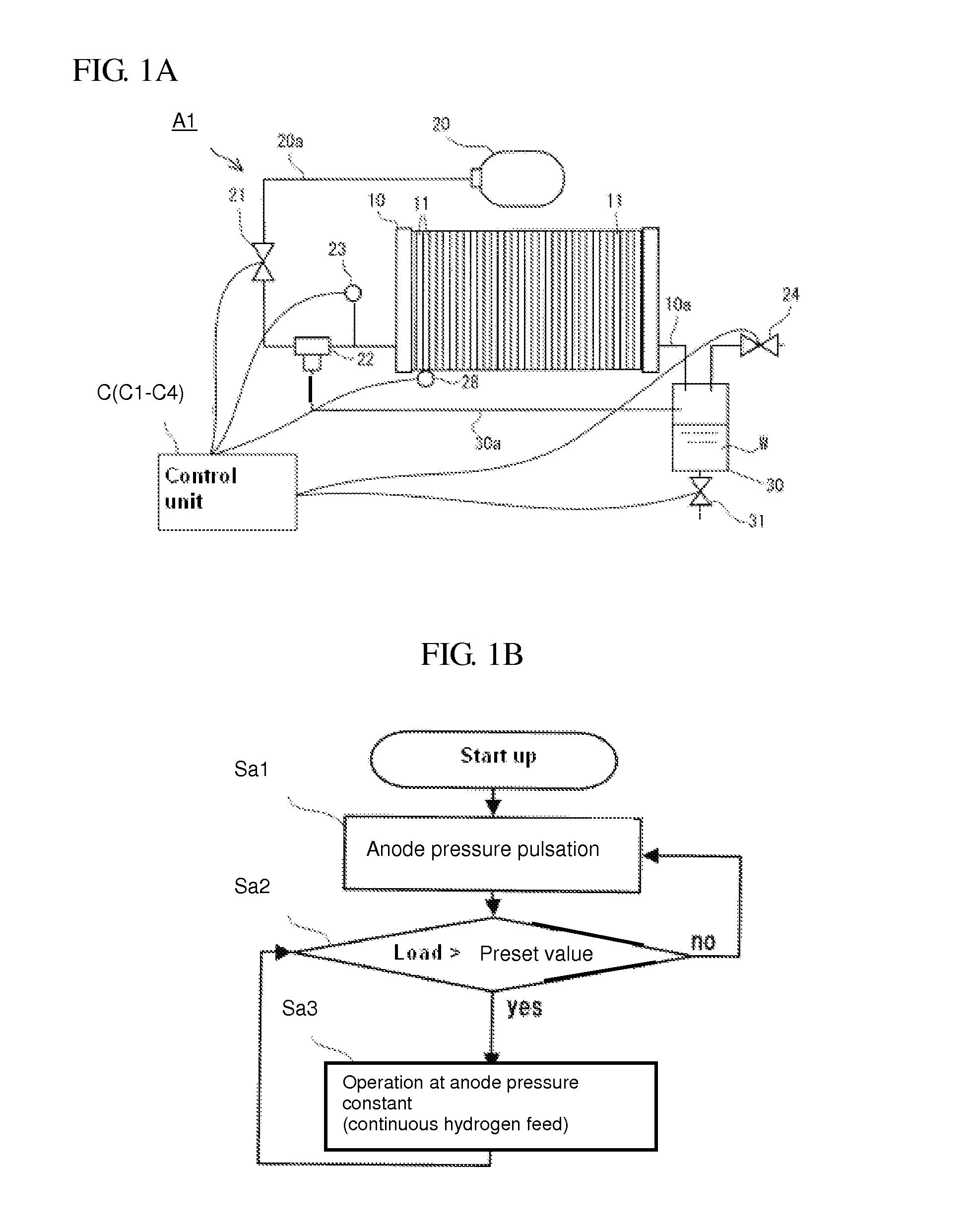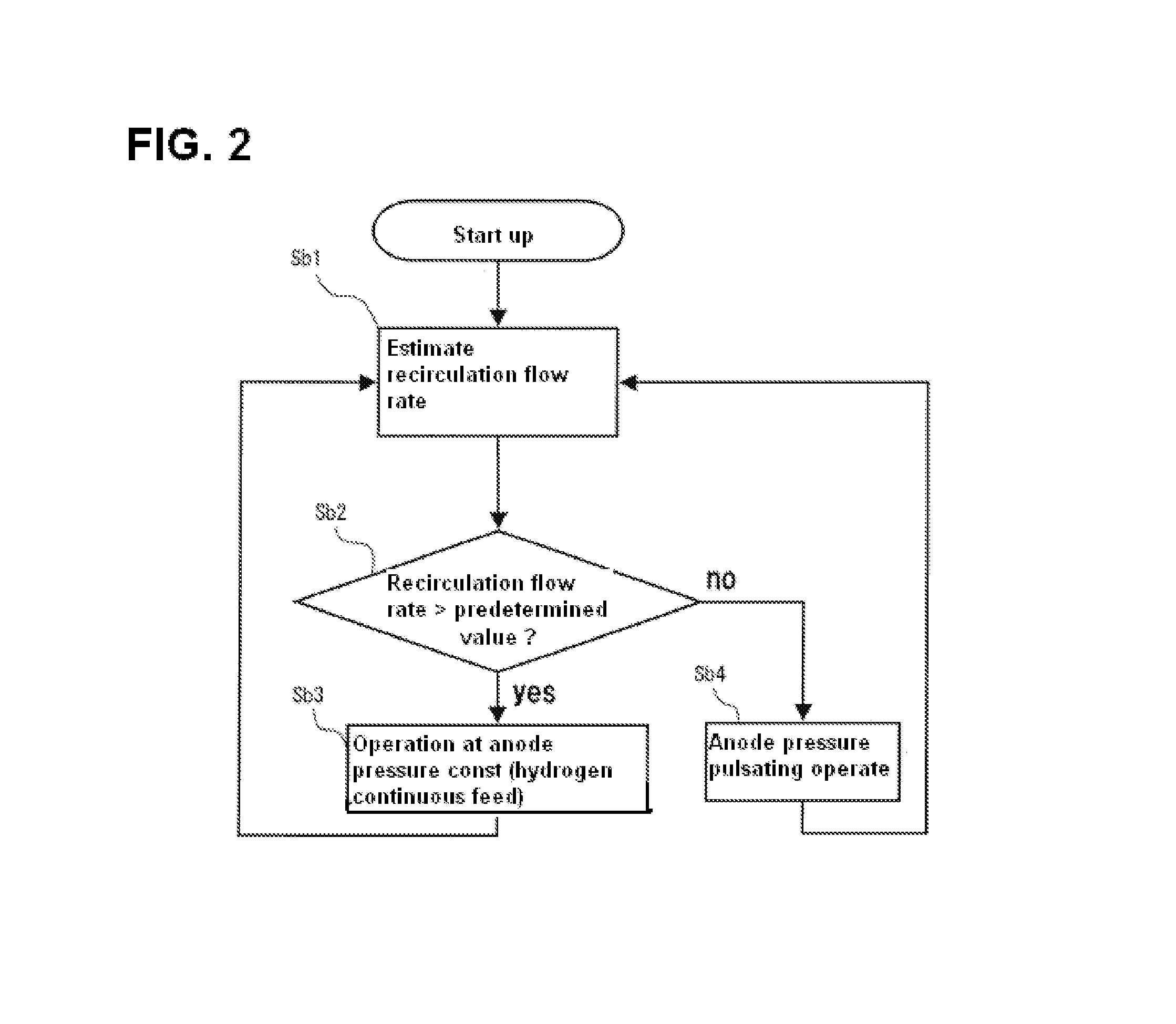Fuel cell system
a fuel cell and system technology, applied in the field of fuel cell systems, can solve the problems of reduced velocity at the ejector nozzle, system complexity, and insufficient recirculation of hydrogen-containing off-gas, and achieve the effects of compactness, stable power generation, and simplified system
- Summary
- Abstract
- Description
- Claims
- Application Information
AI Technical Summary
Benefits of technology
Problems solved by technology
Method used
Image
Examples
Embodiment Construction
[0019]Descriptions of embodiments to carry out the present invention are now made below with reference to accompanied drawings.
[0020]FIG. 1A is an explanatory diagram showing a schematic configuration of a fuel cell system A1 according to a first embodiment of the present invention, and FIG. 1B is a flowchart showing the operations of the fuel cell system A1 at the time of startup.
[0021]Note that, in FIGS. 1, 3, 5 and 6, among circulation systems of hydrogen-containing gas and oxygen-containing gas, only that for hydrogen-containing gas is illustrated and thus the diagram is somewhat simplified by omitting the illustration of the circulation system for oxygen-containing gas.
[0022]The fuel cell system A1 in the first embodiment according to the present invention is configured to include, in addition to cell stack 10, a fuel tank 20, a pressure regulating valve or modulator 21, an ejector 22, a pressure sensor 23, a temperature sensor 28, a nitrogen purge valve 24, a separate tank 30,...
PUM
| Property | Measurement | Unit |
|---|---|---|
| temperature | aaaaa | aaaaa |
| flow rate | aaaaa | aaaaa |
| pressure | aaaaa | aaaaa |
Abstract
Description
Claims
Application Information
 Login to View More
Login to View More - R&D
- Intellectual Property
- Life Sciences
- Materials
- Tech Scout
- Unparalleled Data Quality
- Higher Quality Content
- 60% Fewer Hallucinations
Browse by: Latest US Patents, China's latest patents, Technical Efficacy Thesaurus, Application Domain, Technology Topic, Popular Technical Reports.
© 2025 PatSnap. All rights reserved.Legal|Privacy policy|Modern Slavery Act Transparency Statement|Sitemap|About US| Contact US: help@patsnap.com



